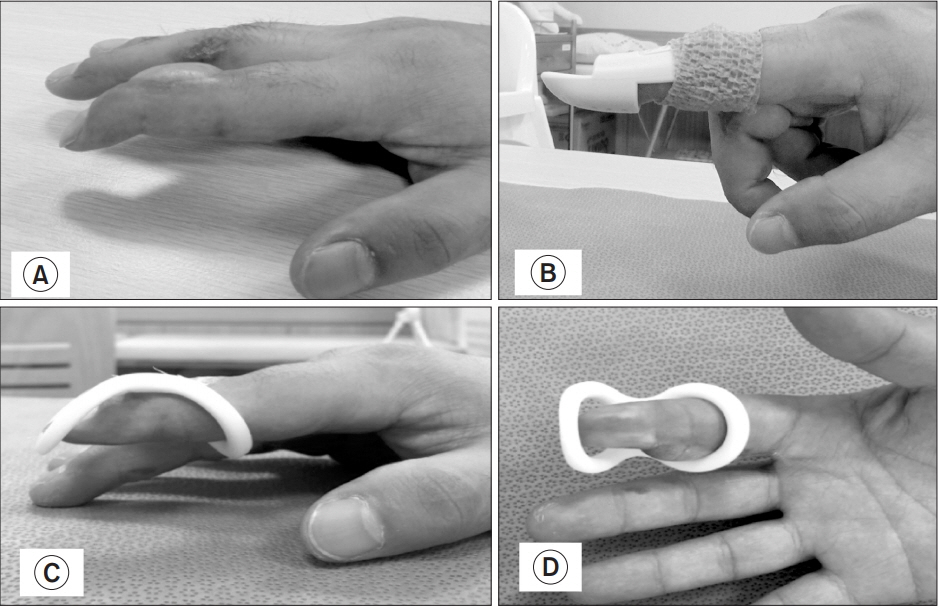Ann Rehabil Med.
2018 Aug;42(4):634-638. 10.5535/arm.2018.42.4.634.
The Application of Three-Dimensional Printed Finger Splints for Post Hand Burn Patients: A Case Series Investigation
- Affiliations
-
- 1Department of Rehabilitation Medicine, Kangdong Sacred Heart Hospital, Seoul, Korea. skyler02@hallym.or.kr
- 2Department of Rehabilitation Medicine, Hallym University Hangang Sacred Heart Hospital, Seoul, Korea.
- KMID: 2420059
- DOI: http://doi.org/10.5535/arm.2018.42.4.634
Abstract
- The application of three-dimensional (3D) printing is growing explosively in the medical field, and is especially widespread in the clinical use of fabricating upper limb orthosis and prosthesis. Advantages of 3D-printed orthosis compared to conventional ones include its lower cost, easier modification, and faster fabrication. Hands are the most common body parts involved with burn victims and one of the main complications of hand burns are finger joint contractures. Applying orthotic devices such as finger splints are a well-established essential element of burn care. In spite of the rapid evolution of the clinical use of 3D printing, to our knowledge, its application to hand burn patients has not yet been reported. In this study, the authors present a series of patients with hand burn injuries whose orthotic needs were fulfilled with the application of 3D-printed finger splints.
Keyword
MeSH Terms
Figure
Reference
-
1. Sorkin M, Cholok D, Levi B. Scar Management of the Burned Hand. Hand Clin. 2017; 33:305–15.
Article2. Choi JS, Mun JH, Lee JY, Jeon JH, Jung YJ, Seo CH, et al. Effects of modified dynamic metacarpophalangeal joint flexion orthoses after hand burn. Ann Rehabil Med. 2011; 35:880–6.
Article3. Brown M, Chung KC. Postburn contractures of the hand. Hand Clin. 2017; 33:317–31.
Article4. Jang KU, Seo CH, Kim MK, Moon CH, Yang JI, Kim JW, et al. The distribution analysis of orthotics in burn rehabilitation. J Korean Burn Soc. 2004; 7:98–103.5. Lee KH, Kim SJ, Cha YH, Kim JL, Kim DK, Kim SJ. Three-dimensional printed prosthesis demonstrates functional improvement in a patient with an amputated thumb: a technical note. Prosthet Orthot Int. 2018; 42:107–11.6. Burn MB, Ta A, Gogola GR. Three-dimensional printing of prosthetic hands for children. J Hand Surg Am. 2016; 41:e103. –9.
Article
- Full Text Links
- Actions
-
Cited
- CITED
-
- Close
- Share
- Similar articles
-
- Spontaneous Flexor Tendon Rupture of the Burned Hand
- Evaluation of the dimensional change of 3D-printed complete denture after post-curing
- A Case of Crushing Burn Injury: A Case Report
- Effects of Modified Dynamic Metacarpophalangeal Joint Flexion Orthoses after Hand Burn
- Heterotopic Ossification in Post-Burn Scar Contracture of the Wrist





